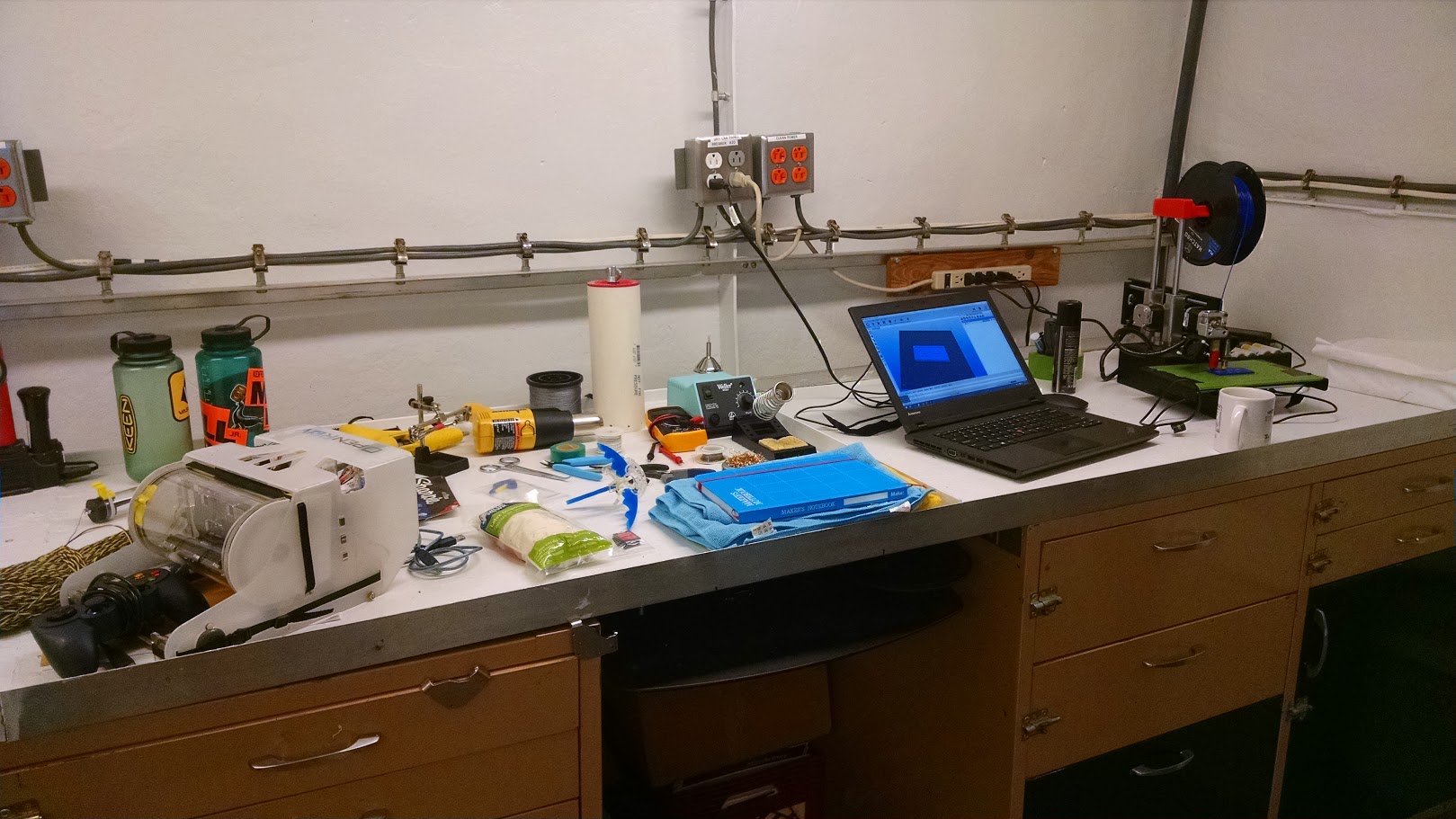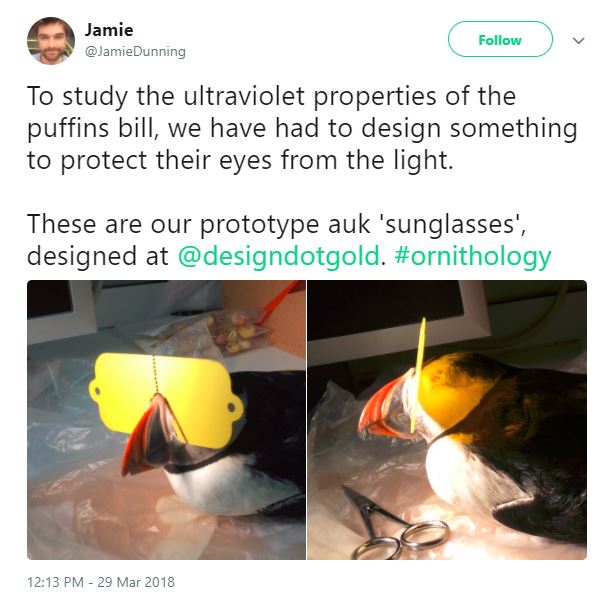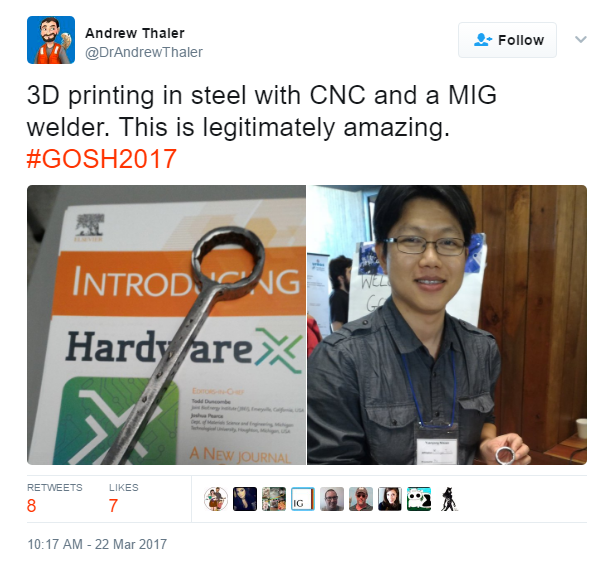Transcript available below.
Tag: open source
What makes a good 3D printer for field work? It needs to be reliable, it needs to be durable, it needs to be reasonably portable. It also needs to print good, strong parts with decent resolution. They don’t have to be pretty, but they do have to work.
Last year, if you asked me what the absolute best 3D printer for field work was, I wouldn’t have hesitated to tell you it’s the Printrbot Simple Metal. This little beast has traveled the world with me, gone to sea, and taken an absolutely massive beating. And it’s still my main workhorse. At $600 plus a lot of custom modifications, it’s still the best deal in terms of quality, cost, and reliability out there.
If you can find one.
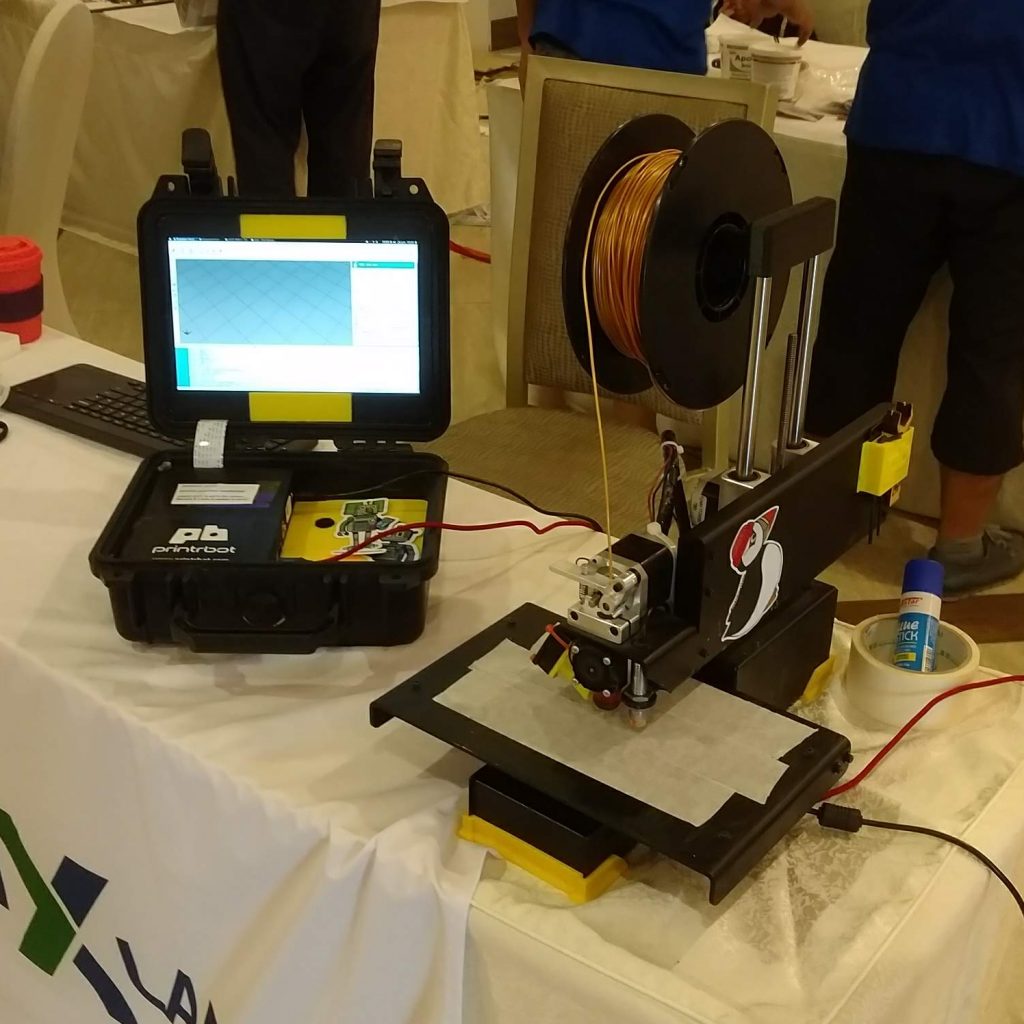
Printrbot went out of business last year, due in large part to the proliferation of cheaper machines that have pretty good quality. The company sat in an awkward niche, too expensive for entry-level consumers, not quite up to par for people looking to drop several thousand on a professional machine. As important as it is to me, “can you kick the crap out of it and drop it off a boat?” is not a criteria that rates highly for most people who want a low-cost machine that will sit comfortably on a desk forever.
But that puts me in an tough spot right now. Conservation Tech, especially low-cost, open-source conservation tech, is booming, and we need machines that work in the field on the budget of a conservation biologist. I couldn’t tell you what the best cheap 3D printer on the market is right now for people who need it for field work, travel, or just want a tough machine that works and doesn’t cost much.
So I’m going to buy a bunch, beat them to hell, and figure it out.
The Southern Fried Science Ultimate 3D Printer Review Process
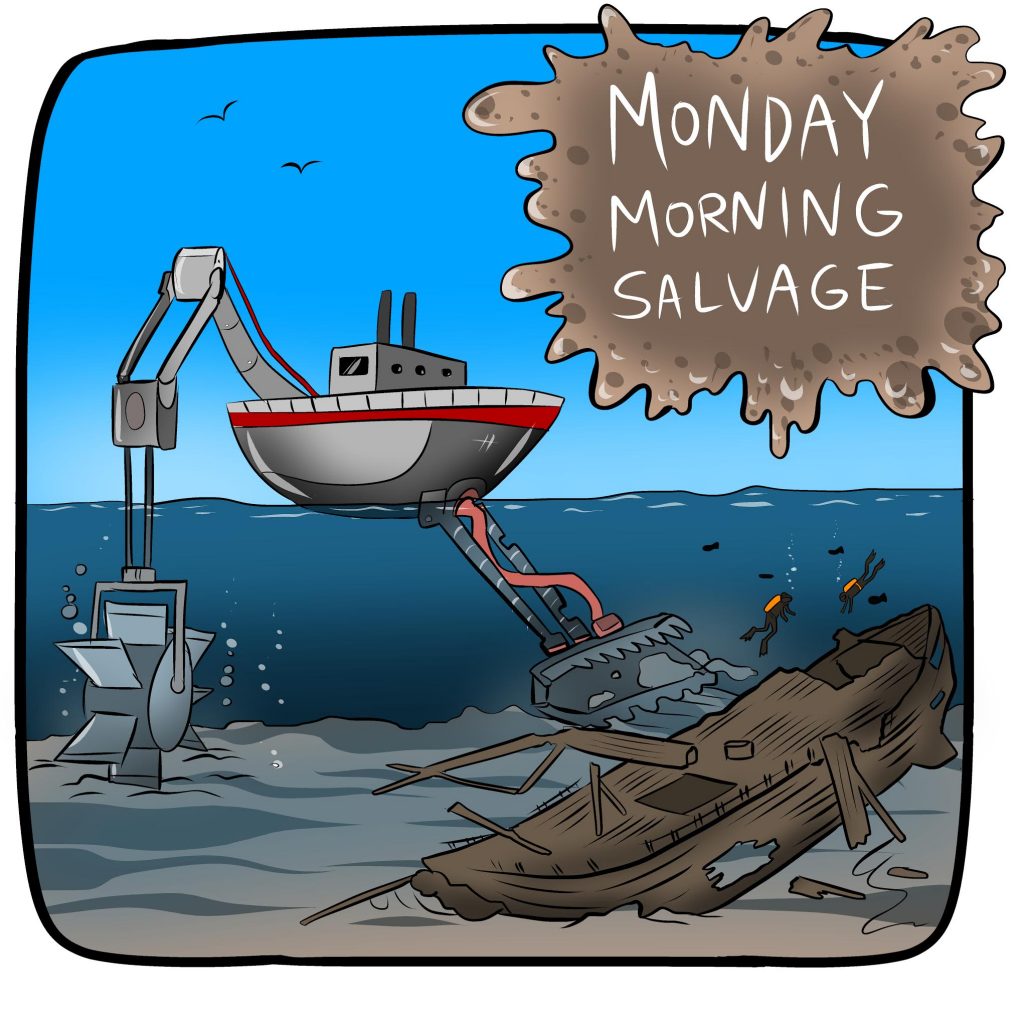
Foghorn (A Call to Action!)
- Want to help stem the tide of misinformation online and off? Do you have it all figured out and just need resources to implement your world-saving solution? The Rita Allen Foundation is looking for Solutions to Curb the Spread of Misinformation.
Flotsam (what we’re obsessed with right now)
- Hagfish. Tough. Lovable. Slimy. But not too slimy. Hagfish Take Weeks to Recover from Sliming Someone.
https://www.youtube.com/watch?v=pmaal7Hf0WA
- Kevin D’Angelo integrated the OpenCTD with a new protocol for detecting salinity using the gold pins of a microUSB controller and I am blown away! Outstanding work.
- This is a puffin wearing sunglasses for science.
The Levee (A featured project that emerged from Oceandotcomm)
- Installed as a beacon of hope for a hurricane-racked island, the statue had to be moved multiple times due to the eroding coast: Our Lady of the Sea by Russel Arnott.
- Russell also created these outstanding posters to warn us away from Louisiana’s famed and fearsome swamp ghosts:
I wrote this story a couple of years ago and have been trying to find a home for it ever since. As the issue of proprietary software’s relationship to agricultural technology is back in the news, I figure it’s time to stop shopping this short science fiction story around and put it in front of a real audience. For some real-world background reading, see:
- Why American Farmers Are Hacking Their Tractors With Ukrainian Firmware.
- Hacking the Tractor: what the future of farming means for open science.
- New High-Tech Farm Equipment Is a Nightmare for Farmers.
- We Can’t Let John Deere Destroy the Very Idea of Ownership.
DEAR JOHN.
It started with the tractor. Or, rather, it stopped with the tractor. John Willis climbed down from the cabin of his dead machine and removed the cowling. Everything looked fine. The diesel engine shined, its green accents still brilliant.
After years trading his skill with a wrench and a soldering iron for access to his neighbors’ equipment, he finally owned a tractor of his own. The latest model, too. Not ostentatious, but with just enough comforts to make up for the last ten years. The tractor was new, bought debt-free through the Farm Act and a decade of careful planning and backbreaking labor. Expensive, but built to last.
Except it didn’t last. For the third time in an hour, the engine seized, the wheels locked, the console went dead. Willis sighed. He had acres to till and he wasn’t in the mood to spend a day stripping the engine, hunting for some tiny defect. He could send it to the service yard, but he couldn’t afford to wait for an authorized repair. The quote alone would set him back a week.
He couldn’t afford another late planting. Not this year.
He started the tractor. It roared back to life, the engine purred but the console beeped and flashed with panic, a thousand different alarms. The manual, a massive, multi-gigabyte document, was sitting on his work computer, back in the barn. For whatever reason, he couldn’t get it to download to his field tablet. He put the tractor in gear and continued down the field.
Fifteen minutes later, the tractor was dead again.
Well, he thought to himself, at least there’s a rhythm to it. He limped down the rows in quarter-hour bursts.
Read More “Dear John: Farming and technology in the near future.” »
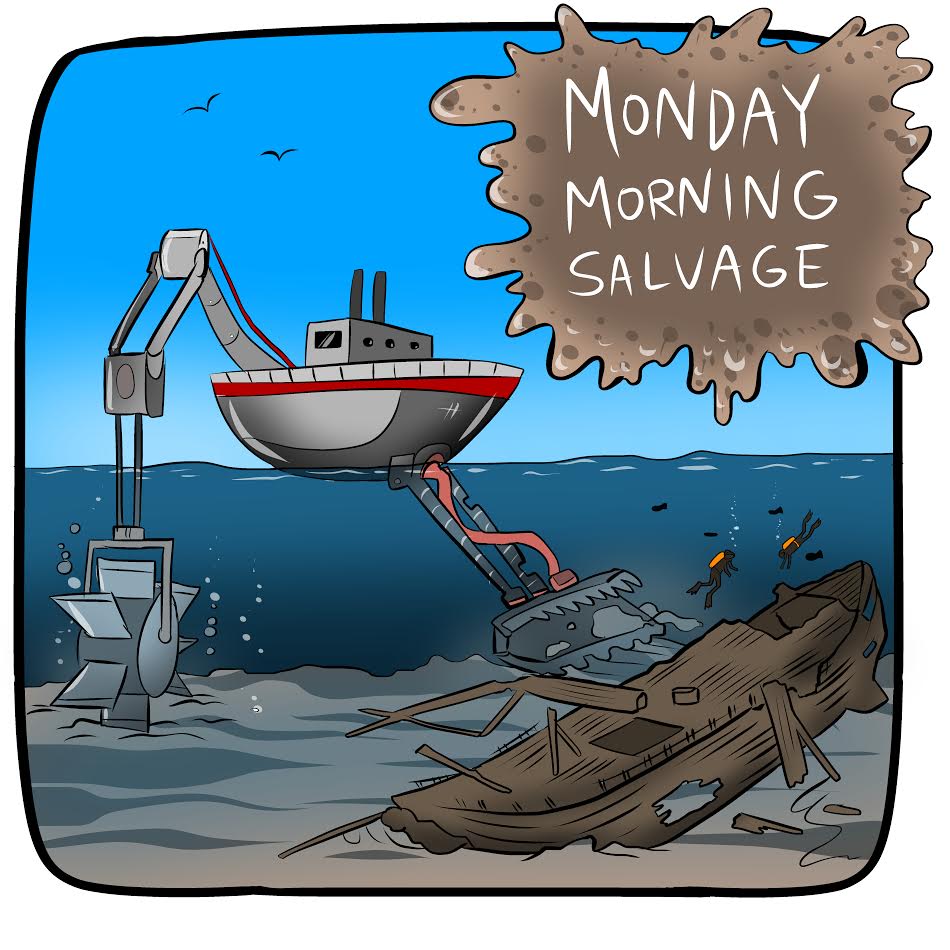
Flotsam (what we’re obsessed with right now)
I spent the last week at the annual Gathering for Open Science Hardware in Santiago, Chile exploring the future of science and the open-source movement with one of the most impressive hardware developers, hackers, makers, and artists in the world. It’s my travel day, so this will necessarily be a short one.
- Among the many things still blowing my mind? 3D printing in steel using a MIG welder. So simple, so clever, so brilliantly implemented. See the paper below.
Read More “Building the future with open hardware. Monday Morning Salvage: March 27, 2017” »
The oceans belong to all of us. With this simple statement in mind, the Oceanography for Everyone (OfE) project was launched with the goal of making ocean science more accessible. One of the biggest hurdles in conducting ocean science is instrumentation costs, and 4 years ago the OfE team began trying to make one of the most basic ocean science tools, the CTD (a water quality sensor that measures Conductivity-Temperature-Depth), cheaper… much, much cheaper!
Read More “Fun Science FRIEDay – Open-Acess Science for the Masses” »
Nearly four years ago, Kersey Sturdivant and I launched a bold, ambitious, and, frankly, naive crowdfunding initiative to build the first low-cost, open-source CTD, a core scientific instrument that measures salinity, temperature, and depth in a water column. It was a dream born from the frustration of declining science funding, the expense of scientific equipment, … Read More “Open source. Open science. Open Ocean. Oceanography for Everyone and the OpenCTD” »
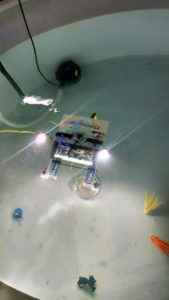 One-hundred-fifty meters hardly seems like anything at all.
One-hundred-fifty meters hardly seems like anything at all.
Standing in the parking lot of OpenROV, I pace out 150 meters. The small sign, hanging against the wall of the battered warehouse, pointing visitors towards the entrance, is clear.
One-hundred fifty meters is less than half a lap around a standard running track. It’s the height of Old St. Paul’s Cathedral, the tallest building in the world, 700 years ago. The fastest man in the world could cover 150 meters in 14 seconds.
On land, 150 meters is barely noteworthy. Plunge into the sea and 150 meters is the wine dark deep. It is the edge of the photic zone, a world of eternal twilight. It is three times deeper than most SCUBA divers will ever venture. At 150 meters, the water pushes down with the weight of 16 atmospheres.
And, if you climb high into the Sierra Mountains and descend into the frigid alpine waters of Lake Tahoe, just off the coast of Glenbrook, Nevada, lying on a steep glacial slope at 150 meters depth is the wreck of the Steamship Tahoe.
Read More “Dive the Wreck of the Steamship Tahoe with OpenROV!” »
Two weeks ago, I announced my latest Hacking the Ocean project, an open-source, Arduino-powered water level meter that monitors the frequency of tweets containing the hashtag #sealevelrise. Since launch, the Sea Leveler has had some bugs and received some good press. Now that I’ve had some time to monitor its performance and work the bugs out of its code, it is finally time for the promised “how to build the Sea Leveler” post.
This project was much more involved than my Arduino build and significantly more rewarding. The Sea Leveler was a challenge on multiple fronts, from learning to make the Arduino talk to twitter to physically modifying the water level meter. As I noted in my first project log, I have very little programming experience, and the major goal of this build was to level up my C++ skills. I’m very happy with the results, both technical and aesthetic.
For simplicity, I’m going to break this into two posts, one for hardware and one for software.
Read More “Arduino Project Log: Building the Sea Leveler Part 1 – Hardware” »

Two weeks ago, a machine was left on the “free” table at my lab that surprised me–a beautiful stainless steel mechanical water level gauge, on of those old ones with a flywheel in the back that drives the mechanism. Seeing this made me realize that there must be thousands of old scientific devices rusting away in laboratories across the country, obsolete but too well-build to just be thrown out. Then, I thought, there must be some way to take these old tools, some of them elegant, hand crafted works of industrial art, and give them a second life. For Science Online Oceans, I proposed a section on “Hacking the Ocean” developing low-cost, DIY instrumentation to make oceanography accessible to a broader community, but could that work the other way? Can we harness that same maker mentality to take abandoned scientific instrumentation and turn them into tools for education and outreach, or create art through instrumentation?
So I built the Sea Leveler.
http://www.youtube.com/watch?v=UI6p5QxTDEU
